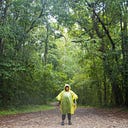Understanding Zimbabwe’s water-gender -climate change nexus through intersectionality
Equitable access to water and sanitation is a challenge in most urban and rural areas in Zimbabwe.
According to UN-Water, about 30% of the population in Zimbabwe uses a safely managed drinking water service (SDG indicator 6.1.1, 2020). In comparison, about 26% of the population in the Southern African country use a safely managed sanitation facility.
When the conversation around urban water management in Harare arises, it’s hard for residents not to get angry. About 50 percent of Harare’s 4.5 million residents receive municipal water once a week. When the water does come, it may come out dirty. Not only are local authorities endangering citizens with poor quality and potentially contaminated water, but they also chip away the trust between themselves and citizens.
For those with economic resources to secure private access to “clean and safe” water on their property; purchasing bulk water or drilling boreholes are alternative coping mechanisms. Bulk water delivery is a lucrative business in Zimbabwe’s urban areas. Mudenda (2013) states that these companies are regulated by Statutory Instrument 90 of 2013 Chapter 20:25. The SI came to being as Private Bulk Water Companies had entered water provision uninvited and unregulated by the state.
The SI defines bulk water services, sets out the criteria for registration, operations, and quality assurance of water provided by these entities. Even though this regulation exists, Mudenda’s study in Harare reveals that in 2013, only 4 bulk water companies were registered with government authorities.
Participants of the study cited high costs for registration, lack of monitoring from state authorities, and a long list of demands from the government. In the absence of state provision and supervision of water delivery, residents fall victim to unscrupulous business practices, which directly impact their health. It also illustrates that the commercialization of water provision doesn’t always translate into efficient or effective ways of distributing water among populations.
Other layers hindering equitable access to clean water as outlined in Sustainable Development Goal 6, include systematic gender inequalities and chronic underinvestment by government authorities in water and sanitation infrastructure.
These factors result in women and girls losing time for economic, leadership, and educational activities as they search for alternative sources of water in Harare. UNDP Zimbabwe states that women and girls can spend up to 8–9 hours waiting at crowded boreholes and wells. Carrying out this also exposes them to physical and sexual harm while searching for water.
However, the conversation of water management cannot neglect the impact of climate change on this essential service. During the 2018–2020 period, Zimbabwe faced a prolonged drought. This affected the availability and quality of water supply from catchment areas and ground sources. In a water-scarce country like Zimbabwe, this had a damaging effect on agricultural production, energy production, and consumption. Alternative water sources such as boreholes and water wells had dried up during this period.
While the heavy rains from the 2020–2021 rainy season contributed to increased dam levels in Zimbabwe, the national water authority, ZINWA states that this current water supply to urban areas will only last 21 months. Whilst water urban management in Zimbabwe is often criticized as a politicized process, residents and state authorities need to take stronger action towards adapting to and mitigating climate change.
At face value, it appears that these myriads of challenges emerging from the urban water-climate change nexus impact all residents the same. The framework of intersectionality proves that this is not the case. Through intersectionality, one can assess how multiple and overlapping systems of discrimination affect different groups' interaction with water access, resource management, and climate change. It moves the urban water management- climate change conversation towards understanding how power shapes individuals varied experiences with water access.
From this perspective, citizens and state authorities can recognize that community borehole points have not been designed to incorporate the specific needs of women and girls with disabilities to facilitate their access to water. In this example, it's clear that ableism and sexism hinder women and girls with disabilities from their human right to clean water. The interactions of gender, disability, and economic status demonstrate how existing water access intervention strategies and programs define “women” and women’s problems as homogenous.
As extreme weather patterns such as drought and flooding become frequent in urban and rural areas in Zimbabwe, one cannot help to observe the uneven preparedness among citizens. Individuals differently experience access to information about climate science and education, control over water, and knowledge about safety measures during disasters; due to their economic status, gender, sexuality, disability, race, or location. In the era of SDGs and global commitment to leaving no one behind, we cannot continue to have marginalized groups invisible.
It’s critical that policymakers, implementers, and citizens adopt an intersectional lens to the water-gender-climate change nexus in Zimbabwe. In doing so, we can ensure that generations of Zimbabweans will have access to equitable and safe water.
